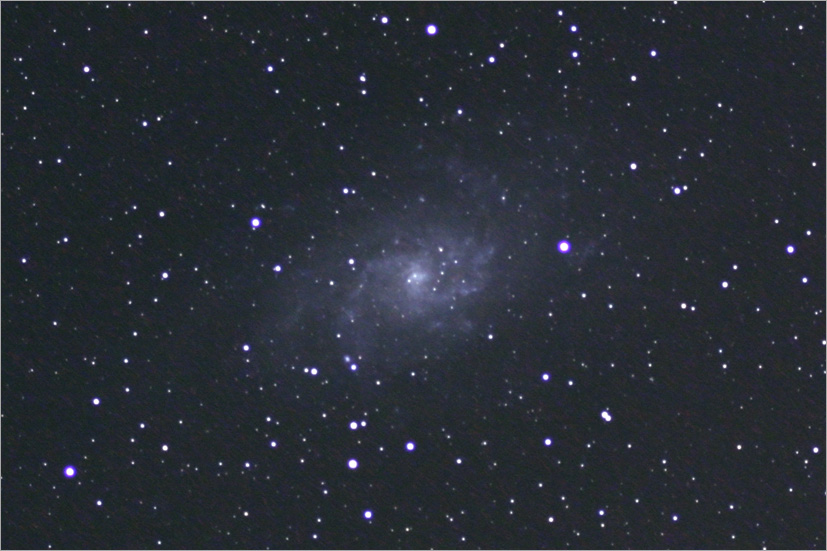
Tracked and Stacked
Galaxy M33
M33 is large, and reasonably bright, but it can be hard to photograph under bright skies because it has relatively low surface brightness.
Shooting under a dark sky and stacking multiple individual exposures are the best way to improve the signal-to-noise ratio in an object like this.
|
|
M33 is a beautiful, large, face-on spiral galaxy located in the constellation of Triangulum.
Also known as NGC 598, and the Triangulum Galaxy, M33 may have been first discovered before 1654 by Hodierna, and then re-discovered by comet-hunter Charles Messier in 1764.
M33 is part of the local cluster of galaxies which includes our own Milky Way galaxy, M31, and the Magellanic Clouds. This cluster is also part of a much larger super-cluster of galaxies called the Virgo cluster.
M33 covers an apparent area of sky bigger than the full moon, but it also has a relatively low surface brightness. From an excellent dark-sky site under good conditions, it can be seen by keen-eyed observers without optical aid.
Three different methods of measuring the distance to M33 have been used, yielding values from 2.6 to 3.1 million light years.
Image Data
- Lens / Scope: Stellarvue SV70ED ED doublet refractor
- Focal Length: 420mm
- F/stop: f/6
- Exposure: Stack of six 150-second exposures (15 minutes total exposure)
- Mount: Orion Sirius polar-aligned German-equatorial mount
- Guiding: None
- Camera: Unmodified Canon EOS 1000D (Digital Rebel XS)
- Mode: JPEG
- ISO: 1600
- White Balance: Custom, set on sky background
- In-Camera Noise Reduction: Off
- Filter: None
- Temp: 65F
- Start Time: 3:32 a.m.
- Date: June 28, 2009
- Location: Batsto, NJ
- Calibration: None
- Processing: Standard in-camera JPEG processing. Stacked in Deepsky Stacker. Contrast and color adjusted in post processing.